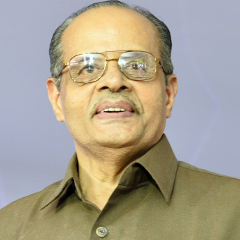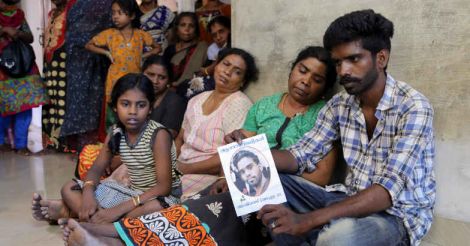What has happened in Kollam on the morning of Black Sunday (10th April) has shocked the collective conscience of the nation. The governments, both in the State and the Centre, acted swiftly to provide immediate relief to the victims, many of whom are still struggling in different hospitals. Families of the dead and those who suffered loss of property are recovering from the shock and are expecting justice from the State machinery, not knowing what they need to do for it.
The State Government reportedly decided to set up a judicial commission and asked the Crime Branch to investigate the matter. Is this the right way for the justice system to respond? Are there other alternatives to provide timely justice to the numerous victims of such man-made disasters? Here are some thoughts based on the lessons learnt from the Bhopal Gas tragedy of 1980s and the slow-paced justice prevailing in the country.
In legal terms, the disaster in Kollam is both a tort as well as a crime, and action is possible on both fronts. Justice demands that the victims are compensated to the extent monetary compensation can restore their losses, the culprits are given appropriate punishments they deserve and the State takes adequate steps to prevent such tragedies in future. According to the normal procedure, the Inquiry Commission report, as and when it comes, will be examined, culprits will be booked, police will further investigate and gather whatever evidence available and trials, appeals and reviews will happen in the usual course interrupted by interim orders and appeals on them. Not less than three to five years will pass before the system can deliver justice, if at all! Evidence, meanwhile will get lost, witnesses will turn hostile, money will be spent from all sides pursuing elusive justice, media will carry stories on the sufferings of the victims and public will forget and forgive the culprits blaming the laws and justice system. Some out of frustration, may take the law in their hands and avenge the injustice which, in turn, may lead to more criminal and civil proceedings.
An Alternative Model for Quicker Delivery of Justice:
The State can demonstrate its will to do justice in spite of structural and procedural problems of the existing system by trying an alternative model, which is being successfully employed in different jurisdictions across the world. This is called “Restorative Justice”, which is a hybrid of civil and criminal proceedings with active involvement of offenders/tortfeasors, victims and the community/State. It participates with some features of “Lok Adalat”, “Plea Bargaining”, “Commission of Inquiry” and Court proceedings. The object is (a) to ensure quick and fair justice through a participatory process of all stakeholders aimed at making the wrongdoers acknowledge their guilt and willingly agree to make amends to set right the wrongs committed; (b) to impress upon the victims that the community is concerned about what happened to them and will listen to their views and suggestions in working out an acceptable package of reliefs and remedies within the legal framework; and (c) to address directly the immediate needs which the 'wrong' has generated to the victims, the community, the offender and the State and thereby restore the balance upholding truth, reconciliation and solidarity.
Restorative model of justice delivery does encourage empathy and responsibility on the part of the offender without having to prove guilt according to technical rules of evidence and long-drawn trials under criminal procedure. It does attempt to make offenders do the needful for healing the harm and transform himself to behave responsibly as a person dependent on social support for his own welfare. In short, while reaching justice to victims by way of reliefs and offender acknowledgment of wrong doing, restorative justice seeks to strengthen inter-personal relationship essential for community life and social solidarity, which is more than what adversarial litigation can offer in justice delivery.
Steps in Restorative Justice:
Given below is a broad outline of the alternative system of justice delivery to the victims of the Kollam tragedy which may be called 'Justice, the Restorative Model.'
(1) Create a Kollam Fire Victim Compensation Fund and channelise all monetary reliefs to victims from the Fund. Money received from all sources, government or non-government should be put into the fund, the accounts of which can be kept separately for a proper audit later.
(2) Constitute a Tribunal at the site of the tragedy, chaired by a high court judge known for integrity and efficiency in handling accident claims to receive petitions from victims supported by affidavits on loss suffered and claims made for the same identifying those whom they consider responsible for the harm.
(3) Direct as many “Task Forces” as necessary from the Legal Services Authority to process and verify claims according to protocols developed for the purpose so that they are presented to the tribunal within a fortnight from receipt. If interim reliefs are to be offered, they may be processed within a week from receipt of petitions.
(4) Let all those allegedly involved in causing the injury, whatever be their role, be charged for causing Negligent Homicide (Sec. 304-A Indian Penal Code) and issued notices to co-operate with the tribunal’s proceedings under threat of arrest and detention.
(5) The Crime Branch, which is conducting the investigation, should be asked to produce the documentary evidence already available on actions and omissions on the part of those involved, including the police officials. Members of the public who have anything to offer to fix responsibility of wrong doers be notified to submit the same orally or in writing before Magistrates who will record it under Section 164 of the Criminal Procedure Code and make them available immediately to the tribunal.
(6) Let there be a website created for the tribunal, which will make available to the public all information received through government or non-government sources and report on action taken by the tribunal on day-to-day basis. The tribunal will have a public relations officer who will brief the media from time to time.
(7) The tribunal will have groups of specially trained retired judges and public spirited senior advocates who will form themselves into what may be called “Restorative Forums” who will not adopt the adversarial model nor the so-called mediation procedure obtaining in the usual Lok Adalat proceedings. The process has to be necessarily collaborative (not imposed from outside by judges or advocates) in which the victims, selected local community members and offenders will take a decisive role. The idea is to get a mutually agreed solution , which will include acknowledgement of the role of the offender, addressing the harm and its cause directly by explaining how to put things right or heal the harm through reparation or otherwise acceptable to all.
A direct face-to-face encounter may sometimes be necessary and sometimes not desirable. The object is full and free exchange of information to let the victim ventilate the grievance and to let the offender realise the contributory role he played for the resulting harm with or without intention or knowledge. In the process, the causes for the harm will get clarified, the role of offenders and victims will be understood by the parties and the outcomes tend to repair the harms done by tailoring justice to the needs of the victim and offender. Participation of community representatives will soothen strained nerves and facilitate the reconciliation and re-integration process.
(8) The main tribunal presided by the High Court Judge will oversee the proceedings in the Restorative Forums, hear any appeal to resolve problems which may arise during the course of hearing in the Restorative Forums and finally pass the order to be executed immediately by the tribunal itself based on agreements reached by parties in the Restorative Forums.
(9) Parties need not have lawyers as the Legal Services Authority will provide them wherever necessary. No expenses are to be incurred by parties and the proceedings will not drag on for over a month or two. The whole procedure has the sanction of a plea bargained settlement under Chapter XXI-A of the Criminal Procedure Code.
(10)Those parts of the agreement to be implemented by the State administratively or otherwise will be taken up by the concerned department promptly and result communicated to the tribunal which, in turn, notify the same in its web site.
The whole process of settling claims will be completed well before the six month period given to the judicial inquiry commission to submit its report. Peace and harmony will meanwhile be restored in the area and the whole community will feel that justice is done within reasonable time to the satisfaction of victims and offenders. If Kerala were to try out this model, with the approval of the High Court, it would have shown the way how the justice system should respond to address mass torts or community involved harms of this nature.

























